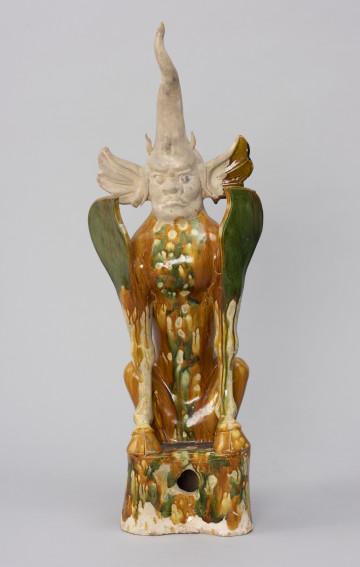
Hall wardrobe
around 1700
National Museum in Lublin
Part of the collection: Goldsmithery
Tobacco grows wild in the western hemisphere. Already in ancient times, it was cultivated in Mexico and used for medicinal purposes in various forms. Snuff is powdered tobacco, often enriched with flavourings, intended to be taken nasally. Unlike with cigarettes, the nicotine is not absorbed by the lungs but by the mucous membranes of the nose. Snuff consumption was practised by the indigenous inhabitants of the Americas long before Columbus' expedition. It appeared in Europe at the end of the 15th century when the Spanish and Portuguese imported tobacco. In Lisbon in the mid-16th century, snuff was used by doctors who believed the herb could cure both syphilis and cancer. Snuff was recommended to France's Queen Catherine de Medici, who suffered from persistent headaches. Tobacco, taken through the nose, induced sneezing and thus 'removed unnecessary moisture from the head', which was thought to cause migraines. It proved to be an effective remedy in Catherine's case, so the queen named the tobacco seedlings she received Herba Regina (the queen's herb). That was enough to bring snuff to all European courts. It became a more elegant – even aristocratic – form of tobacco use, the smoking of which was already common practice at the time. It gained popularity in the 18th century and was enjoyed by representatives of all classes, both men and women. Special small and tightly closed containers – snuff boxes – were used to keep it always at hand. They were made from various materials, using forms created by nature, such as animal horns. The aristocracy developed a special ceremonial for snuff taking, and snuff boxes became luxurious jewellery with decorative shapes and refined decoration.
Barbara Czajkowska
Author / creator
Dimensions
cały obiekt: height: 8,2 cm, width: 2,8 cm
Object type
goldsmithing art
Technique
gilding
Material
silver
Creation time / dating
Creation / finding place
Owner
The National Museum in Lublin
Identification number
Location / status

around 1700
National Museum in Lublin

618 — 907
National Museum in Szczecin

1930 — 1939
National Museum in Szczecin
DISCOVER this TOPIC
Castle Museum in Łańcut
DISCOVER this PATH
Educational path